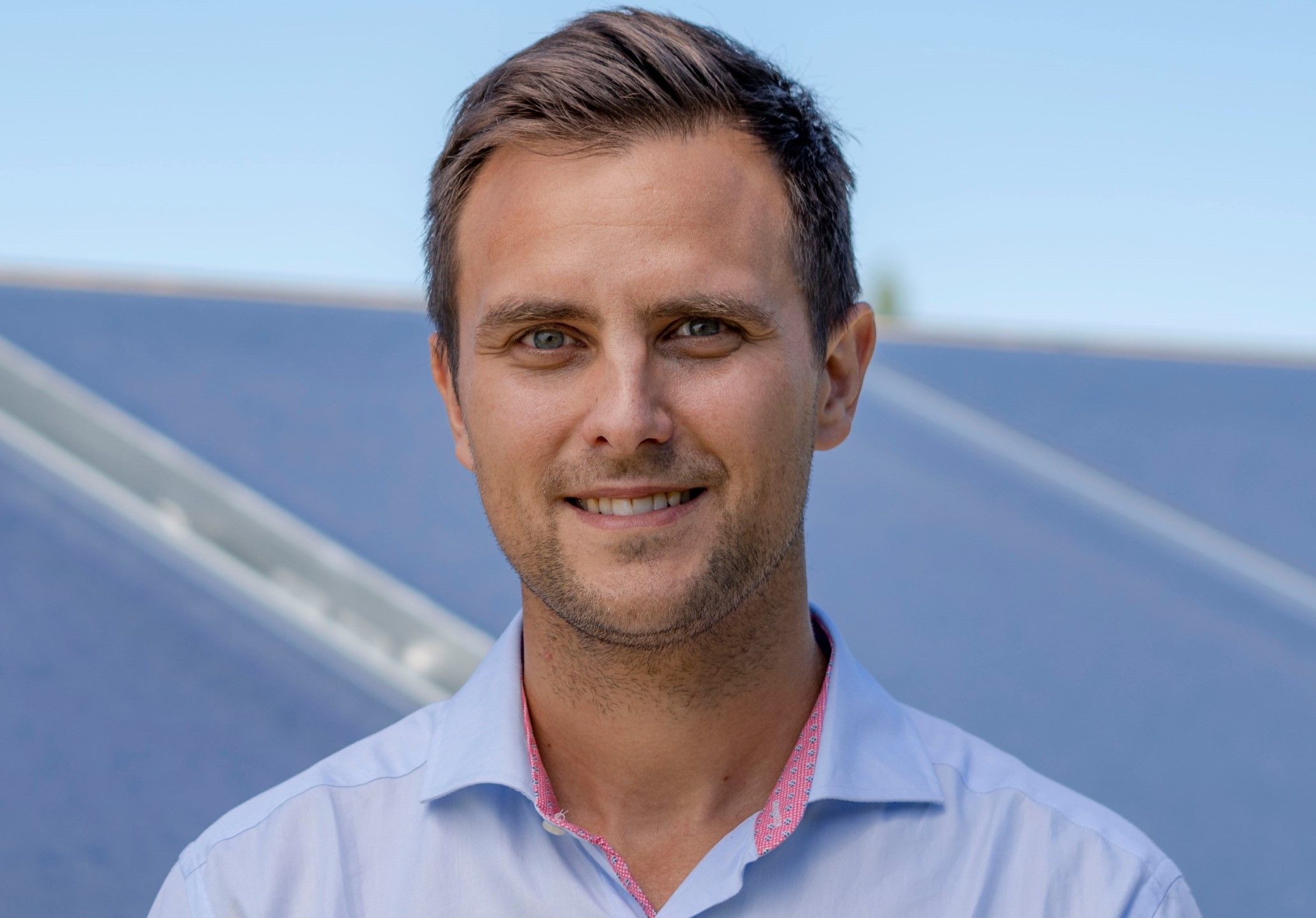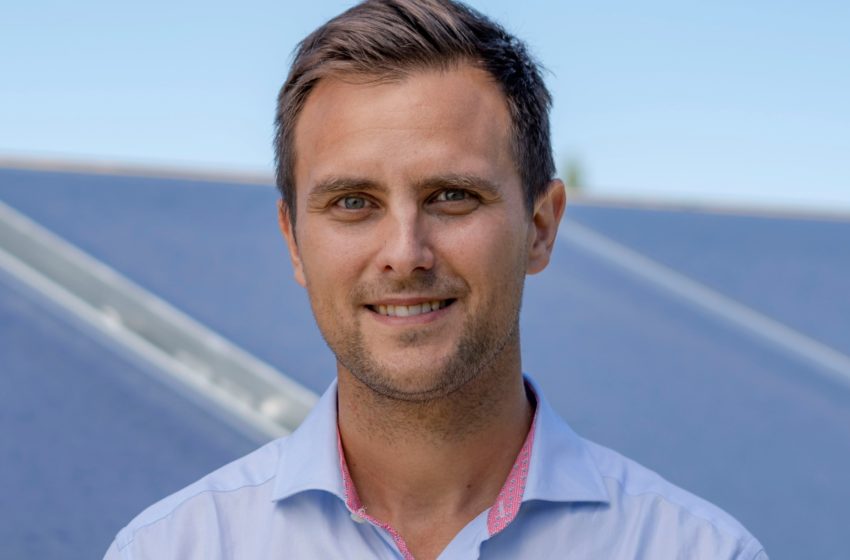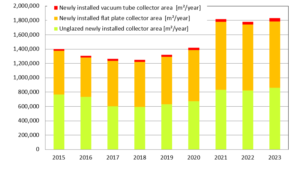

“Project sponsors need to offer banks sufficient securities and guarantees”
French-based NewHeat has just announced that it secured a EUR 13 million bank loan for a pool of five large commercial solar heat systems. The company, founded in December 2015, regards itself as an “independent and integrated solar heat producer.” As an energy service company (ESCO), it offers solar heat contracts to industrial sites and district heating utilities. Solarthermalworld.org spoke with NewHeat CEO Hugues Defréville about the negotiations leading up to the loan agreement and the role of standardised key performance indicators (KPI) in the technical audit.
Photo: NewHeat
What importance does a bank loan have for financing a project?
Defréville: As an energy service company, bank loans allow us to increase the investment capacity in our projects but also optimise the cost of financing. We are very happy about having secured our first large bank loan for a portfolio of five projects, especially from banks as well respected in the renewable energy industry as Banque Triodos and Crédit Coopératif.
Our agreement is special because it consists of two main components. The first component is a bridge loan for the government’s incentives. For each project, we are to receive grants of about 50 % to 60 % of the project costs from French agency Ademe and the administrative region in which the project is, or will be. But the incentives will be paid sometime between completion of an installation and five years after commissioning so the loan is helping us finance projects without having to dip into our cash reserves. The second element is a traditional long-term loan, which will be repaid over the service life of the solar heat plants.
What requirements does a project developer need to fulfil before getting in touch with a bank?
Defréville: Before contacting a bank, you must make sure your project will be profitable, to raise the bank’s confidence in your ability to repay the loan. As France stopped increasing the carbon tax, and because we currently have exceptionally low fossil fuel prices, we need incentives to be profitable and competitive.
In addition, a project must be well organised, both from a technical and a contractual perspective, as the bank will, with the assistance of specialised auditors, assess all potential risks that the project may face. Regarding the size of the investment, it is indeed much easier to awake a bank’s interest if the total loan exceeds EUR 10 million.
It is often said that banks hesitate to grant loans for new technology. Is that how you see it too?
Defréville: We do not think so, no. It is the responsibility of the project sponsor – either the developer or a majority investor such as NewHeat, to provide banks with good enough reasons, securities and guarantees to convince them that the technologies are not particularly risky and that any issues during operation will be dealt with so they will not lose their money.
Regarding our projects, the possibly worrisome part was not the solar thermal technology itself, as flat plate collectors are considered to be robust and reliable. The complexity of solar heat projects resides rather in heat demand fluctuations and therefore in the design and the optimization of the control of the plant. This goes exactly to the heart of NewHeat’s expertise. We offer our customers good designs of the solar system’s connection to their industrial process or heat network, so that the plant perfectly meets their needs and can respond to issues arising during its service life.
“We need to come up with standarised methods to calculate bank requested KPIs”
At the most recent meeting of the new IEA SHC research group Solar Process Heat, NewHeat co-founder Pierre Delmas mentioned that we need more standardised KPIs for bank negotiations. What did he mean by that?
Defréville: Before granting loans, banks carry out precise and exhaustive audits of many of a project’s aspects, including technical and contractual arrangements. The terms of insurance coverage and all approval procedures are also thoroughly studied by experts. In banking, this is known as due diligence.
The contractual part refers to all commitments between the parties. Banks inspect the heat purchase agreements with the heat customers and the EPC and the O&M contracts. It is important to even out the level of risk accepted by the parties involved and demonstrate that each is able to fulfil its obligations.
There is also the technical audit, and this is the one Pierre alluded to when talking about standardised KPIs. The main goal of this audit is to assess the accuracy of estimates showing the amount of annual thermal energy delivered by the solar plant. Project sponsors present these estimates during project preparation, at which point the banks will ask for a second opinion.
So what did the banks expect you to provide as part of this technical audit?
Defréville: The lack of prior experience in funding large solar thermal projects as well as the absence of baseline values makes some calculation parameters difficult to assess. For example, the collectors’ gradual yield reduction due to aging could have a significative impact on annual heat delivery in 15 or 20 years. But this piece of information is missing on Solar Keymark certificates.
We had to draw our own conclusions about the evolution of collector performance, partially based on manufacturer data. Since performance was not standardised, the banks took our study into account but probably saw a risk here and used a more conservative estimate in their own models. This estimate leads to a reduced overall amount of debt, and the project sponsor needs to increase its equity in the project. Hence, we really think it is important that research groups like those within the German project SpeedCall 2 try to create standardised methods for assessing panel yield reductions over a 20-year period.
Was this the only standardised KPI missing during the technical audit?
Defréville: When it comes to solar PV as well as wind energy projects, banks are used to dealing with two indicators, called P50 and P90, to assess the accuracy of estimates that show the energy delivered annually. P50 is the threshold at which you have a 50 % chance to produce more energy per year, and P90 means your plant will generate the specified amount with 90 % probability. In the case of grid-connected clean power projects (Solar PV or Wind), local weather conditions are the key driver of this KPI. As for P50, you could use average irradiation over a decade and global plant efficiency to simulate yields. Regarding P90, you could take a look at 20 years of weather data and nine out of 10 times, the plant will remain above the specified yield.
However, these two values are trickier to calculate for solar heat projects because we also need to factor in our customers’ operating environment. Changes in required temperatures and flow rates or production schedules can have a noticeable impact on the amount of solar heat delivered. In short, it is not just about the weather: For example, if the process temperature increases by 10 °C, solar thermal plant performance will drop significantly.
A first solution would be to come up with a standardised method for calculating the two parameters. Independent engineering firms should then develop the necessary assessment expertise to be able to reassure the banks that the numbers are correct.
Interview conducted by Bärbel Epp.
Organisations mentioned in this news article:


